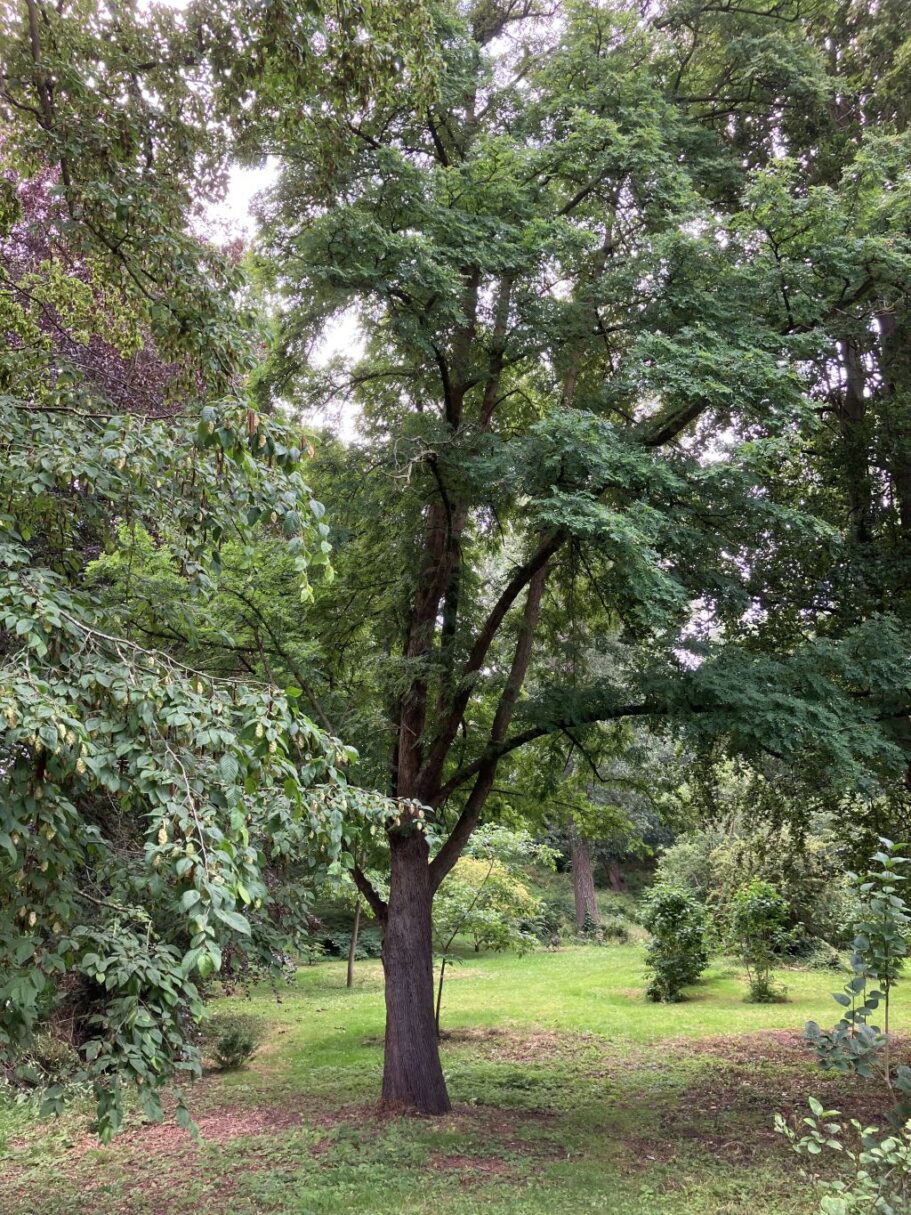#125 TRUE SERVICE TREE
Sorbus domestica subsp. pomifera

This tree can be found near the fire site.
County Champion
| Distribution: | Central and southern Europe, north Africa, east to Moldova, Turkey, and Ukraine. |
| Planting Date: | 1919 |
| Bought from: | Hillier Nurseries, Romsey, Hampshire |
| Growth Habit: | A deciduous tree growing to 20 m. It can also be a grown as a shrub 2 m to 3 m tall, on exposed sites. |
| Bark: | The bark is brown, smooth on young trees, becoming fissured and flaky on old trees. |
| Leaf: | The leaves are 15 cm to 25 cm long, pinnate with 13 to 21 leaflets 3 cm to 6 cm long and 1 cm wide, with a bluntly acute apex, and a serrated margin on the outer half or two thirds of the leaflet. |
| Flowers: | The winter buds are green, with a sticky resinous coating. The flowers are 13 mm to 18 mm in diameter, with five white petals and 20 creamy-white stamens. They are produced in corymbs 10 cm to 14 cm in diameter in late spring. Hermaphrodite and insect pollinated. |
| Fruit: | The fruit is a component of a ‘cider like’ drink which is still made in parts of Europe. Picked straight off the tree, it is highly astringent and gritty. When left to over-ripen it sweetens and becomes pleasant. |
| Tree height and girth in 2023 | Height 17 m and girth 197 cm |
| Uses: | The wood is dense and holds a profile well. Used, for example: to make screws for French wine presses and for manufacturing wooden wood-work planes. |
| Introduction Date: | Well known in cultivation for several 100 years |
| Anecdotes and Comments: | In 2023 rated County Champion by height and girth by The Tree Register. The English name is derived from the Middle English ‘serves’, which comes from Old English and ultimately the Latin name for the fruit, sorbus. Another English name, ‘whitty pear’, is derived from the leaves being similar to those of rowan and the fruits pear shaped. In the Czech Republic, there is a special festival for this tree, with products like jam, juice and brandy made from its fruit. |